Dudleya Succulents 101: A Visual Tour of 52 Different Varieties
Dudleya, pronounced as “dude-leya,” are absolutely stunning succulents that can add a touch of beauty to your home or outdoor spaces like your patio or porch. And guess what? They’re often mistaken for Echeveria! Another cool thing about Dudleya is that they have a nickname – “Liveforever.”
These awesome plants are actually native to North America, specifically from Oregon all the way down to Baja. There are around 45 different Dudleya species that have been officially recognized. These succulents are known for their plump, fleshy leaves that form rosettes. You’ll find them in shades like gray, blue, and green, which make them even more eye-catching.
What’s really interesting is where Dudleya likes to grow. They thrive on cliff faces, rocky outcrops, and bluffs along the coast. Talk about resilience! All Dudleya types are tough and can live for a long time. So, if you want to add a touch of nature’s beauty to your surroundings, Dudleya succulents are definitely worth considering.

Contents
Types of Dudleya Succulents
Let’s dive into the fascinating world of Dudleya varieties, each offering a delightful assortment of colors, shapes, and textures.
Dudleya abramsii

Dudleya abramsii ssp. abramsii

Dudleya abramsii ssp. affinis

Dudleya abramsii ssp. bettinae
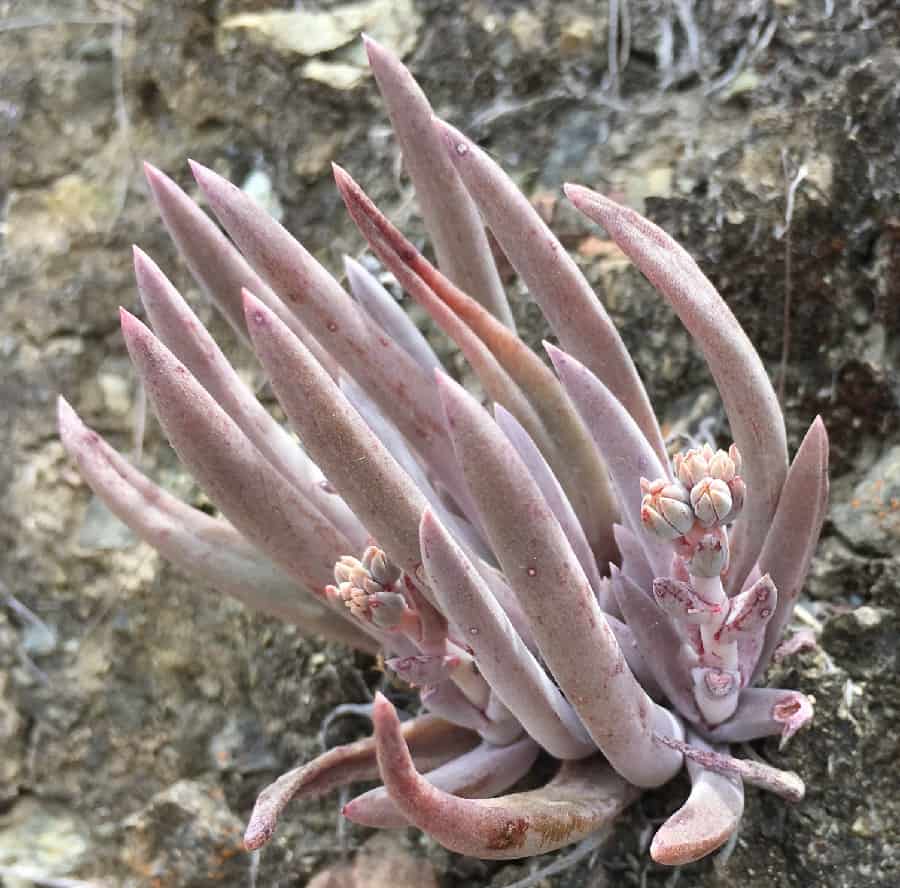
Dudleya abramsii ssp. calcicola

Dudleya abramsii ssp. murina

Dudleya abramsii ssp. setchellii

Dudleya arizonica

Dudleya blochmaniae
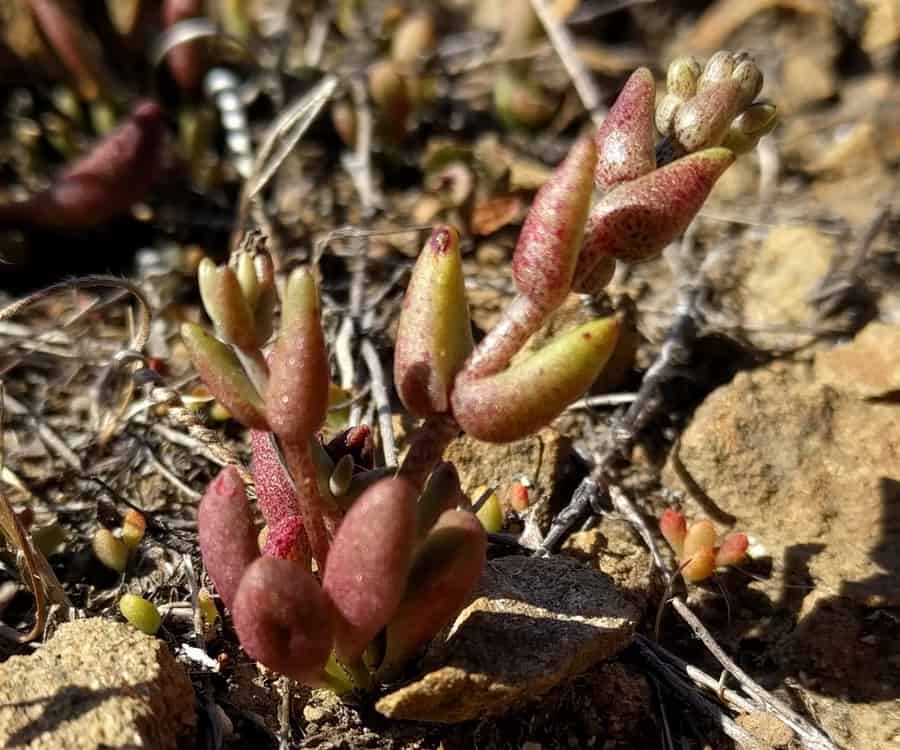
Dudleya blochmaniae ssp. blochmaniae

Dudleya blochmaniae ssp. insularis

Dudleya brevifolia

Dudleya brittonii

The ‘silver dollar plant’ (Dudleya brittonii) is a fantastic example of a solitary succulent. It forms compact, neat plants with slender leaves that are covered in a white, waxy coating called farina. While some plants may not have this gray coating, they are not as popular. The leaves have a watery sea-green color and a waxy bloom covering.
During late winter to spring, Dudleya brittonii produces bright red, showy flower stems adorned with starry, pink-bracted yellow or orange flowers. As the plant matures, old dead leaves hang on, creating a rough “tutu” on the main stem. This species is commonly cultivated and resembles a chalky gray echeveria (Dudleya pulverulenta), but Dudleya brittonii grows larger, eventually forming a solitary rosette up to 50 cm in diameter.
Dudleya caespitosa

Dudleya cultrata

Dudleya cymosa

Dudleya cymosa ssp. agourensis

Dudleya cymosa ssp. crebrifolia

Dudleya cymosa ssp. cymosa

Dudleya cymosa ssp. marcescens
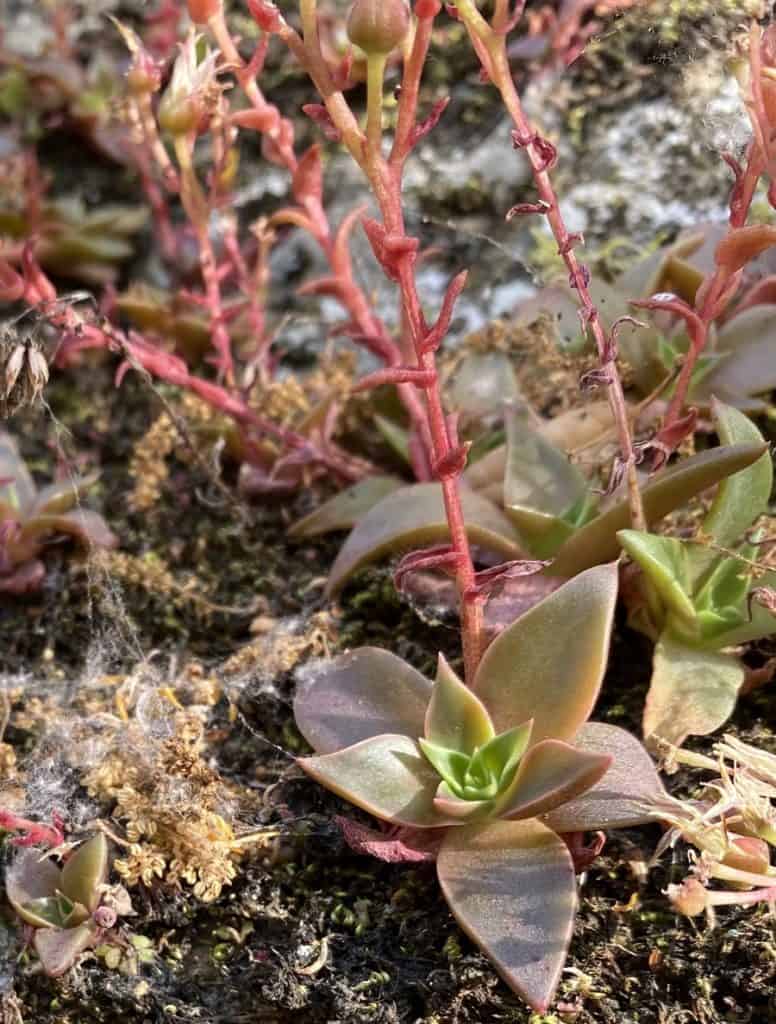
Dudleya cymosa ssp. ovatifolia

Dudleya cymosa ssp. pumila

Dudleya densiflora

Dudleya edulis

Dudleya edulis, also known as ladyfingers, fingertips, or the mission lettuce, is a perennial succulent plant that’s full of character. Its leaves are like green, fleshy fingers that can reach a height of about 8 inches when fully grown. You’ll often find these leaves arranged in rosette clumps on the ground, creating a charming display.
During the summer months, Dudleya edulis shows off its beautiful flowers. These flowers bloom on branches that can grow up to 20 inches tall. The flowers themselves are a lovely combination of white and cream colors, adding a touch of elegance to this unique succulent.
Dudleya farinosa

Dudleya formosa

Dudleya gatesii

Dudleya gnoma

Dudleya gnoma, also known as the munchkin liveforever or munchkin dudleya, is a rare succulent plant. It wasn’t officially described by scientists until 1997, but gardeners and succulent enthusiasts keep it in cultivation. This species is known for its small size and unique charm.
Dudleya greenei

Dudleya ingens

Dudleya ingens is an incredibly variable species. Over time, it develops a short, simple or few-branched caudex (trunk) that can reach up to 12 inches in height or more, with a thickness of 1-2 inches. The upper part of the caudex is densely covered with the bases of old persistent leaves. With age, some plants may develop shrubby stems.
Dudleya lanceolata

Dudleya linearis

Dudleya multicaulis

Dudleya nesiotica

Dudleya nubigena

Dudleya pachyphytum
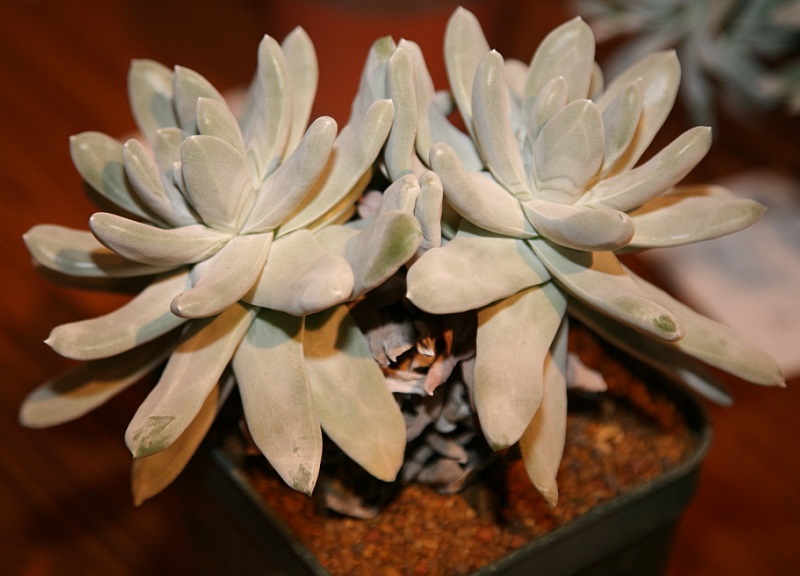
Dudleya palmeri

Dudleya parva
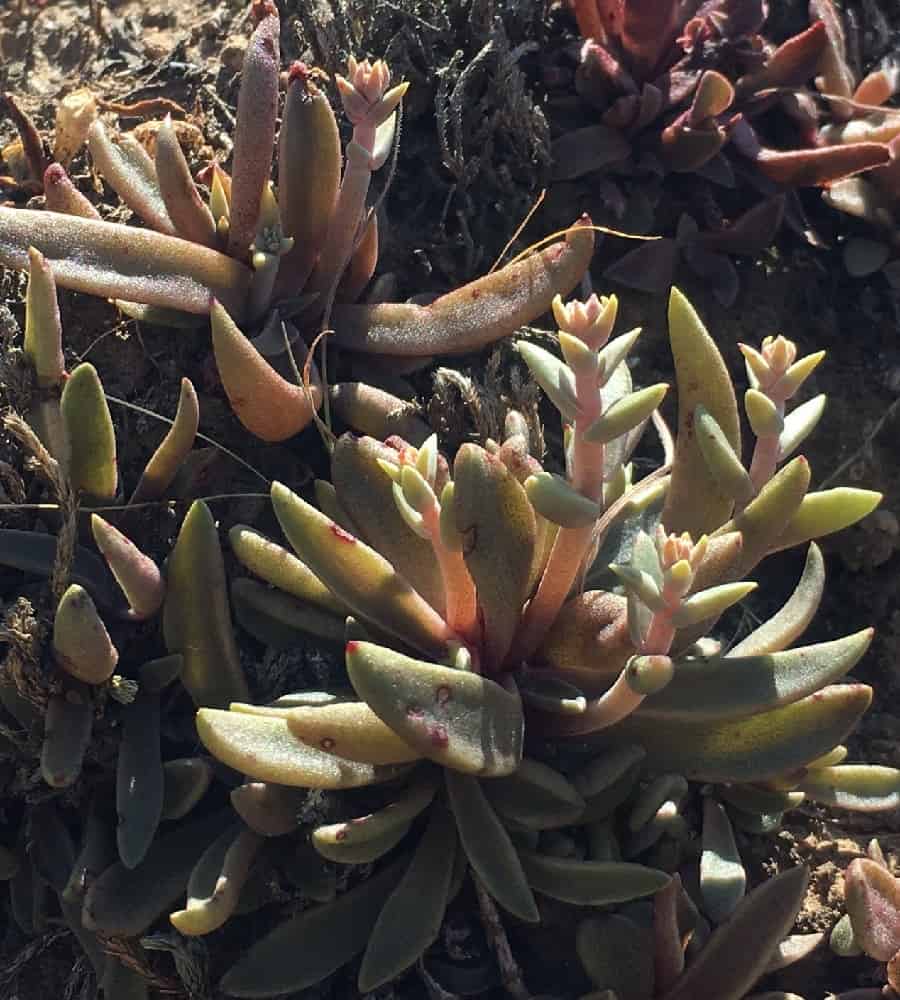
Dudleya pauciflora
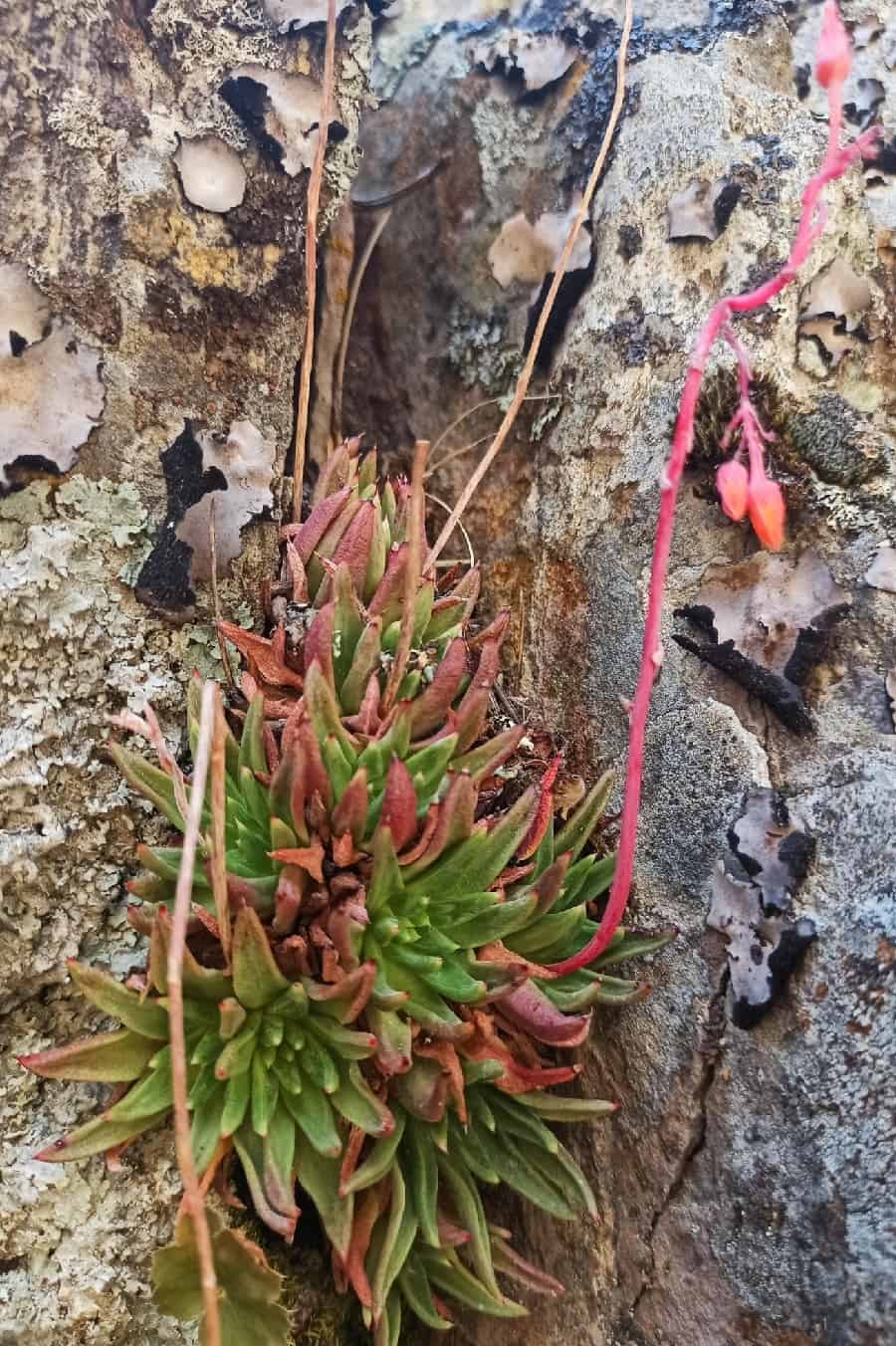
Dudleya pulverulenta
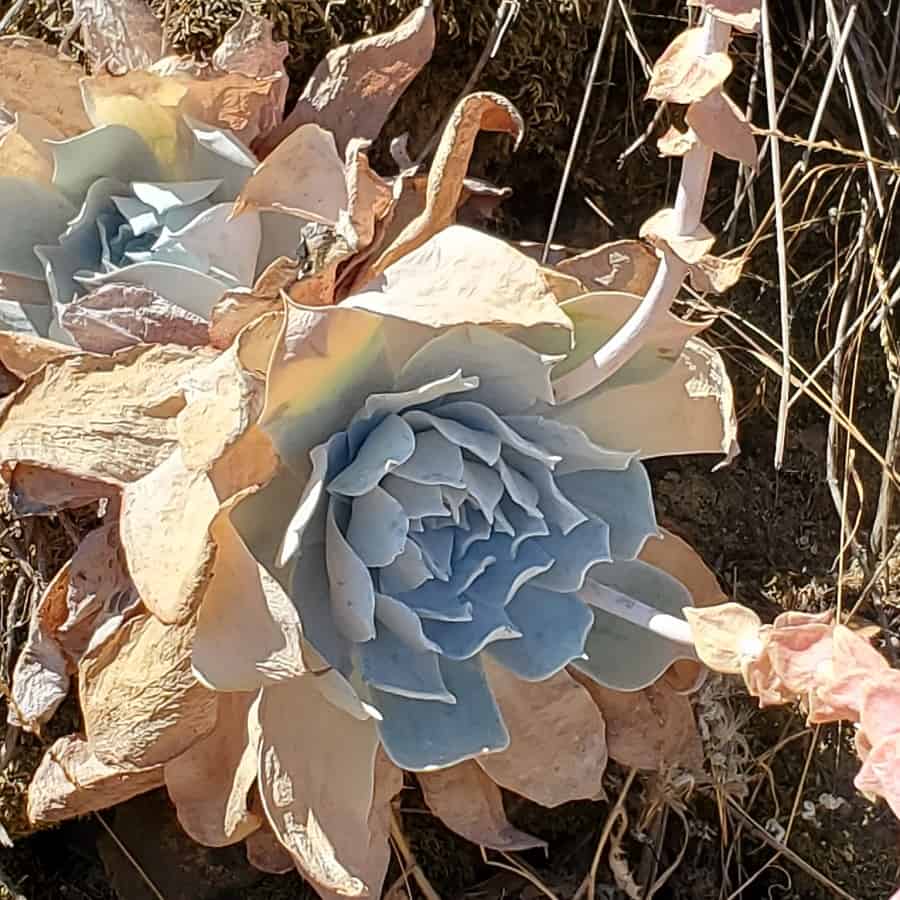
Dudleya pulverulenta, also known as the Chalk Dudleya, belongs to a large group of succulents in the stonecrop family (Crassulaceae). It is a perennial plant forming a rosette of succulent leaves from a thick caudex. Its silvery-white color comes from a coating of fine white mealy powder. The dense, white, mealy powder or chalky wax also occurs on sepals, stems, leaves, and the underside of flowers.
Rosettes send up long, arching flower spikes in late spring. Dudleya pulverulenta is one of the largest and most distinctive species of the genus, easily recognizable from a distance, even without flowers.
Dudleya rigida

Dudleya rubens

Dudleya saxosa

Dudleya saxosa ssp. aloides

Dudleya saxosa subs. collomiae

Dudleya saxosa subs. collomiae is a succulent perennial herb with a short, thick caudex measuring 1-2 inches in thickness. It grows in clumps, bearing 5-10 rosettes. This subspecies is well-isolated and polyploid, similar in shape to the diploid subsp. aloides, but it has larger flowers.
The flowers of Dudleya collomiae are yellow, including the petals and anthers. When immature, flower parts have a light pink tinge. Dudleya saxosa ssp. aloides (panamint liveforever) has lavender to pink flowers.
Dudleya saxosa ssp. saxosa

Dudleya stolonifera

Dudleya traskiae

Dudleya verityi

Dudleya virens
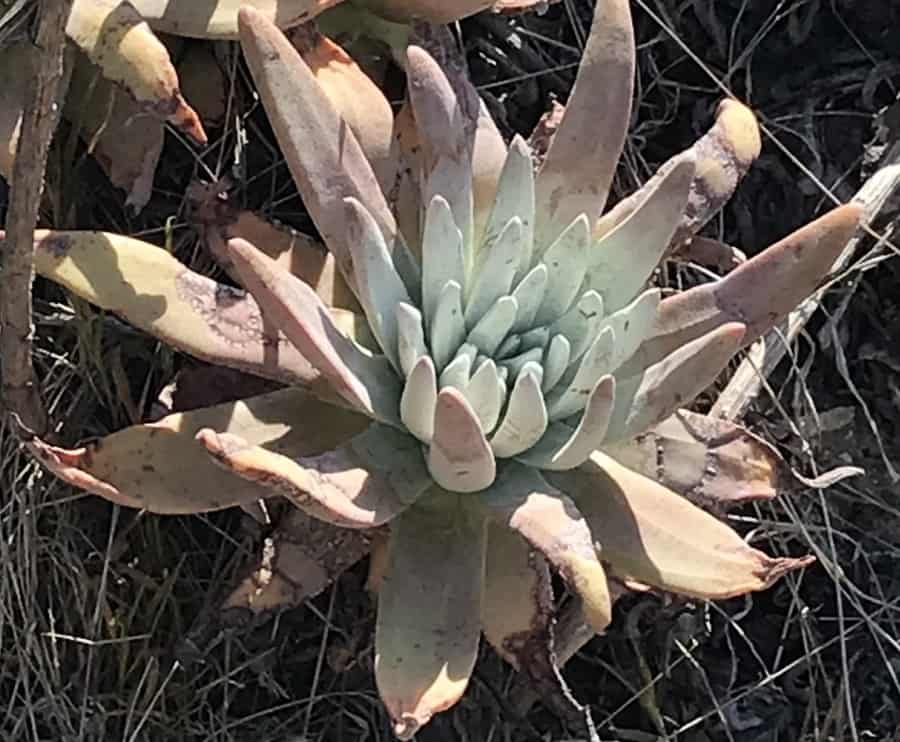
Dudleya virens is a species of perennial succulent plant that branches out and forms cushions of densely clustered rosettes, reaching a diameter of at least 16 inches. The fleshy strap-shaped leaves are flat, non-viscid, and measure approximately 3-8 inches long and 0.6-1.2 inches wide. They taper from the base (or near the middle) and can be green or grayish with reddish tips.
Thick leafy red flower stems emerge from the plant’s center, supporting candelabras of fragrant white or rosy flowers. These flowers have five petals that spread out from the middle.
Dudleya virens ssp. hassei

Dudleya virens ssp. insularis

Dudleya virens ssp. virens

Taking Care of Your Dudleya Plant
Light
Dudleya plants love sunshine when they grow near the coast, but if they’re inland, they prefer some shade. It’s best to place them in an area with partial shade to prevent damage from direct sunlight. These plants thrive in cool environments, but can’t handle frost. If they don’t get enough light, their leaves may become soft and stretchy.
Water
Dudleya plants are low-maintenance when it comes to watering. During the summer, they go into a dormant phase and don’t need any water at all. In the fall, when they start growing and blooming, you can begin watering them. Make sure to water the roots, not the leaves, as this can harm the plant. If the leaves appear dull or puckered, it’s a sign they need watering. Avoid overwatering, as it can lead to root rot.
Read also:
How Often to Water Succulents
Soil
For Dudleya to thrive, they need well-draining sandy soil. Like other succulents, Dudleya has shallow roots that don’t like sitting in water. It’s essential to avoid waterlogging to prevent root rot. These plants are salt-resistant, so they can tolerate soil with high salt content. Look for high-quality pre-bagged cactus soil or a sandy soil mix designed for succulents.
Climate
Dudleya plants prefer sunny and cool conditions. They grow well in USDA zones 5 to 11, but they don’t do well in hot and dry areas. Coastal regions in the US provide the ideal climate for Dudleya to flourish. If you live in an area without much cool breeze, it’s best to plant them in partial shade, away from direct sunlight.
Fertilizer
During summer and winter, it’s best to refrain from applying fertilizer to Dudleya plants. In the growing season, such as autumn or spring, you can use an all-purpose liquid or water-soluble fertilizer. After applying the fertilizer, water the plant to help it absorb the nutrients. Be careful not to splash fertilizer on the leaves, as it can hinder growth.
Repotting
Dudleya plants are relatively easy to transplant because they’re hardy and can handle some rough handling. When choosing a new pot or moving the plant outside, ensure there’s enough space for the roots to spread. Proper root growth is crucial for healthy Dudleya plants.
Read also:
How to Repot Succulents
Propagating Dudleya Succulents
Dudleya can be easily propagated from cuttings, and they develop roots quickly. To propagate Dudleya, choose a healthy cutting without any flower buds from the parent plant during spring when the temperature stays around 70°F. Remove the soil from the base of the stem and use a sharp knife to make the cutting.
Allow the Dudleya cutting to dry in a warm and dry place away from direct sunlight for 5-10 days. The cut end should become dry, hard, and have a whitish color. Mix cactus potting soil and perlite in a container, then pack the mixture into a 4″ container. Add water to moisten the top 2″ of the mixture.
Make a hole in the mixture and place the Dudleya cutting in it. Press the potting mixture against the stem and add a layer of sand around the base to control moisture and temperature. Keep the pot in a warm and bright area, away from direct sunlight. Avoid splashing water on the leaves or overwatering during the rooting process.
After two weeks, gently tug the base of the Dudleya’s stem. If it’s firmly rooted, you can transplant the plant into a permanent pot or your garden using cactus potting soil in 4-6 weeks.
How Big Do Dudleyas Get?
Dudleya plants come in two varieties: branching and non-branching. On average, Dudleya can grow up to two feet tall and spread to about 12-18 inches. In late winter to spring, they produce pinkish-red stems that reach one to two feet in height. These stems bear lovely pale yellow urn-shaped flowers.
Read also:
How Big do Succulents Grow?
